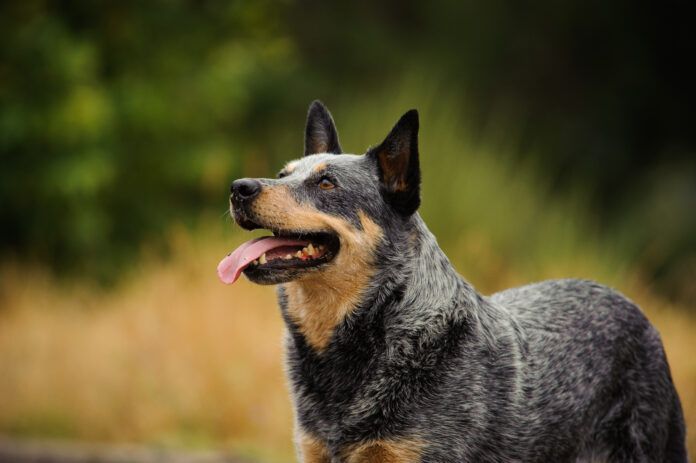Along with size and temperament, health is one of the most important considerations when you are thinking about bringing a dog into the family. Beyond affecting how much you will need to put aside for vet bills, chronic or inherited health conditions can very much impact the length and quality of your dog’s life. But is there any way to know whether one breed—or mix of breeds—will be healthier in the long run?
The truth is that while some populations have a higher chance of being healthy, it’s not an easy task to identify which breeds might have a propensity to inherit certain diseases or conditions.
Choosing Healthier Breeds
Thanks to modern advances in genetic research, today we have a much clearer understanding of the role genomics plays in the health and longevity of dog breeds. Some of what we’ve learned is quite troubling, however: study after study has shown that dog populations which exhibit high levels of inbreeding are more susceptible to critical health issues like cancers, autoimmune disease, and physical deformities.
Nevertheless, certain breeds tend to be healthier and have longer life expectancies than others:
Australian Cattle Dogs have consistently ranked among the healthiest dog breeds. This medium-sized dog (35-50 pounds, 17-20 inches tall) is in the herding dog group, and is generally very active with a life expectancy of 12-16 years.
Australian Shepherds, commonly known as “Aussies,” are another very active herding dog, somewhat larger than the cattle dog at 40-65 pounds and 18-23 inches in height with a 12–15-year life expectancy.
Border Collies are also part of the herding dog group with a life expectancy similar to the Australian Shepherd’s. Their size and weight also echoes that of the Aussie, and like that breed, they need to be kept active in order to discourage destructive behaviors.
Basenjis are among the healthiest dogs in the hound category, ranging from 16-17 inches tall, and 22-24 pounds with a life expectancy of 13-14 years. Their most distinctive feature is their “bark,” which is more like a yodel.
Beagles, known for their loud bray, are also in the hound group, with a life expectancy of 10-15 years. Beagles can range from up to 13 to 15 inches tall, and weigh between 20 and 30 pounds.
Chihuahuas are among the healthiest toy breeds. At 5-8 inches tall and up to 6 pounds, these dogs are known for their high energy. The Chihuahua has a long life expectancy, averaging between 14 and 16 years.
Havanese are another member of the toy group, standing 8-12 inches tall and weighing between 7 and 13 pounds. Despite their long coat, Havanese are tolerant of warm weather. The breed’s life expectancy is similar to the Chihuahua’s.
Siberian Huskies are members of the working dog group. They commonly stand 20-24 inches tall, weigh from 35-60 pounds, and are one of the few dog breeds with blue eyes. Bred as hard-working sled dogs, the Husky has an average life expectancy of 12-14 years.
Belgian Malinois are a larger breed in the herding group. While they can suffer hip or elbow dysplasia, Malinois typically live from 14-16 years. They stand from 22-26 inches tall, can weigh anywhere from 40 to 80 pounds, and are frequently used as police dogs.
German Shorthaired Pointers are one of the healthiest breeds in the sporting dog category, although they can suffer from hypothyroidism and hip dysplasia. Weighing from 45 to 70 pounds and standing between 21 and 25 inches tall, their typical life expectancy is between 10 and 12 years.
What About Mixed-Breeds and “Designer Dogs”?
In the past, it was generally accepted that purebred dogs were significantly more likely to suffer from genetic disorders than mixed-breeds. Recently, however, science has begun to change its tune, thanks to research comparing the health and longevity of purebreds to mixed-breed dogs—research which on the whole found that while some purebreds are more likely to suffer from some genetic disorders, the overall differences in health outcomes fall beneath the level of statical significance.
One surprising fact that emerged is that mixed breeds don’t necessarily have fewer inherited disorders. Among 24 genetic disorders studied, while 10 were found more frequently among purebred dogs, 13 showed up almost equally within purebreds and mixed-breeds.
In 2020, the first major lifespan study of dogs seen in U.S. private veterinary practices showed similar results, finding little difference in lifespan between purebred and mixed-breed dogs. This research did reveal, however, that dog breeds with more genetic diversity lived longer than breeds with less. Current studies bear this out, finding that purebred dogs have no greater frequency of owner-reported medical conditions during their lifetimes than mixed-breed dogs. These and other studies consistently show that while different breeds may be susceptible to breed-specific diseases, one breed is not intrinsically “healthier” than another.
As for so-called “designer dogs”—mixes such as the Labradoodle, Goldendoodle, and Cockapoo—the few rigorous studies that have been done tend to dispel the myth that these mixes exhibit greater “hybrid vigor” than their progenitor breeds. Almost 90 percent of the health comparisons showed no significant differences between the designer and purebred dogs.
Further, the same types of genetic disorders that affect purebreds can impact designer dogs as well: because of the limited number of these mixes, breeders may mate relatively closely related dogs to expand the “breed.” Whenever two relatives mate, the chances are significantly greater that the offspring will inherit two copies of a recessive gene that leads to genetic abnormalities.
In the final analysis, if you’re going to add a new pup to your life, the best thing you can do—whether you’re heading to a breeder or a shelter—is to know what you’re looking for, do your homework, and most importantly, spend some time with the prospective dog before you commit to bringing it home. You may well be spending the next 15 years with this wonderful creature, so make sure you’re truly made for one another.






